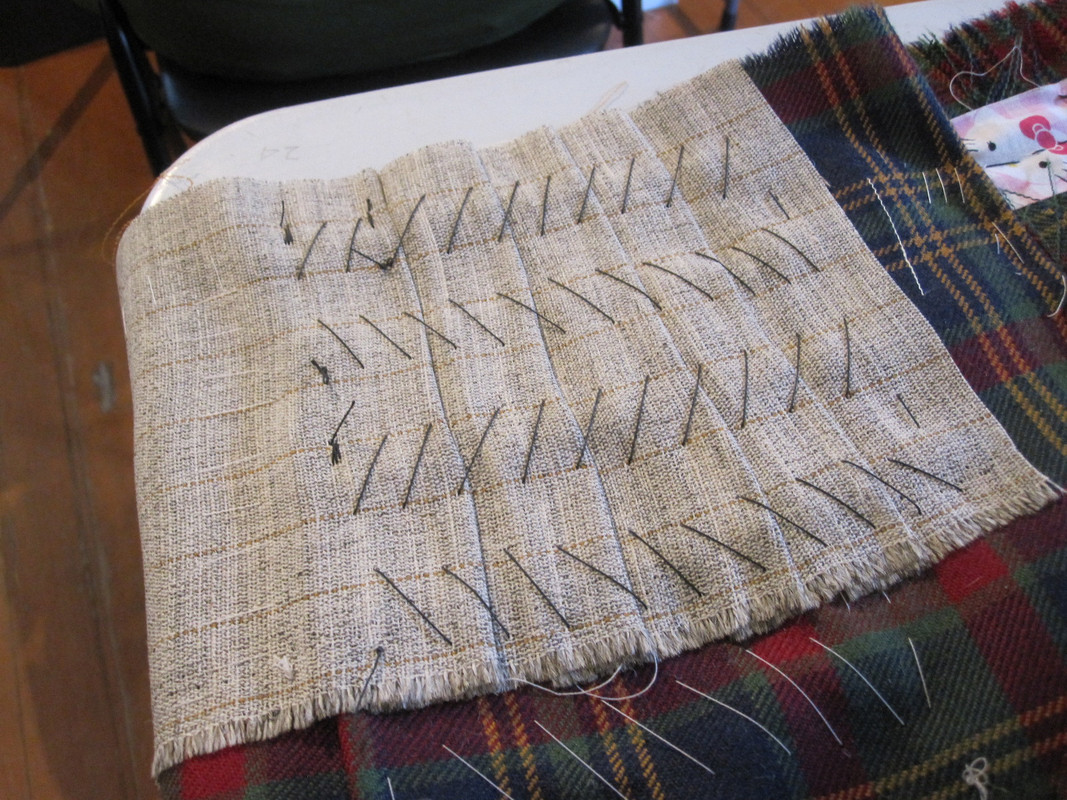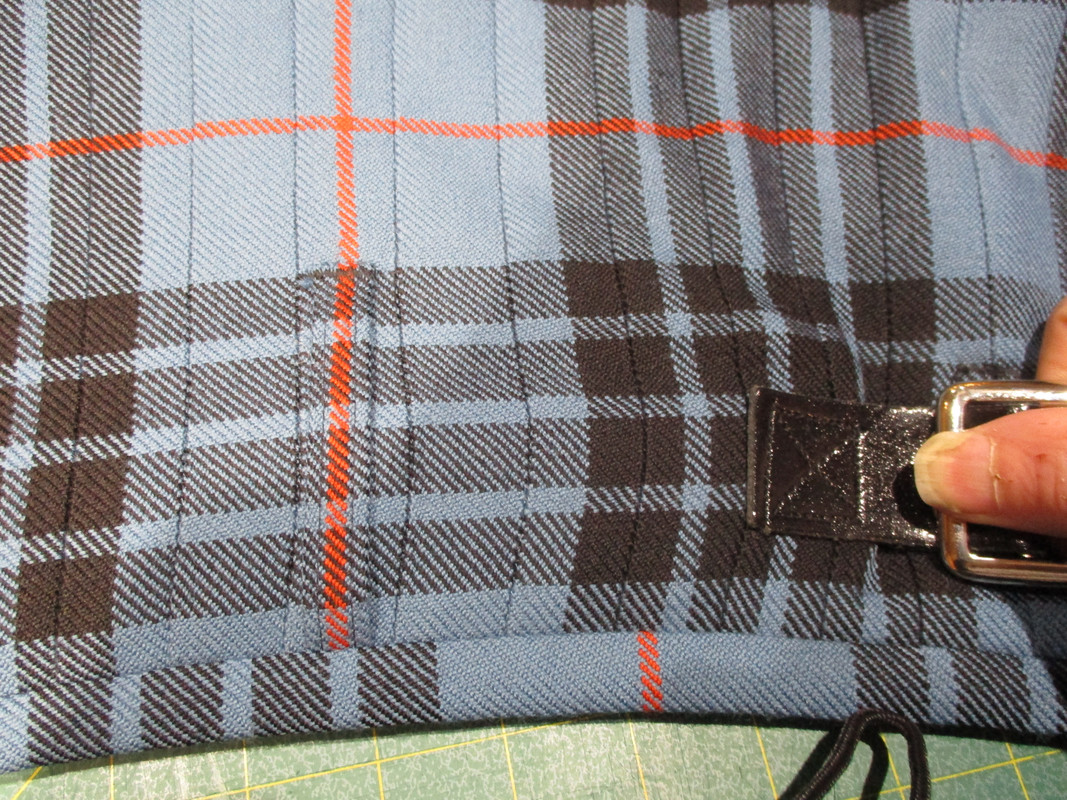X Marks the Scot - An on-line community of kilt wearers.
|
-
15th June 25, 02:43 PM
#7
It is very possible that what has happened here is the Steeking line may have been sewn just a tad too tight.
To understand what I am referring to, you have to understand how a kilt made in the Traditional manner is constructed.
After the Fell Area (the area where the pleats are tapered and sewn down) is sewn, the excess material inside the kilt, that would be bulky due to the taper, is cut-away.

In effect, this weakens the garment, and the only thing holding the whole thing together, are the relatively weak hand stitches in the Fell Area.
And because some of the fabric is cut away the pleats will have a tendency to sag due to their own weight which is no longer supported.
So, a line of stitching is added. This is called "The Steeking Line". It is a line of stitching that hold and anchor each pleat - to the pleats under it, but to not go all the way through to the outside of the kilt.
If the stitches of the Steeking line are pulled too tight as they are sewn they can "Telegraph" to the outside and will appear just as what is seen in your kilt.

The problem for you is that the Steeking Line cannot be seen from the outside and is covered by the interfacing and liner on the inside.
The liner of a kilt made in the Traditional manner is not a structural component. It's only purpose is to cover up what is underneath.
Because the excess fabric is cut-away in the Fell Area you must add a structural element called the "Stabilizer". This is a piece of fabric that is very strong and will resist stretching in the lengthwise direction. It is added inside and goes from one buckle, across the back, to the other buckle.
You can think of the Stabilizer as an internal belt. It is the primary horizontal strengthening element of the Garment.

(On this kilt the 'flame' patterned fabric is just for fun. No one will ever see it after the kilt is finished.)
After the Steeking and the Stabilizer are in, the Horizontal Stiffening Element is added. This is called "The Interfacing". It is usually made from a fabric called "Hair Canvas" or "Suit Coat Chest Canvas". It is stiffer in the vertical direction than in the horizontal direction.

Now a light Liner is sewn in to cover and hide all this internal construction and its elements.

After all of this hidden work, the Fell Area of a Traditionally made kilt, can stand up all on its own.

Now - on your kilt, if the Fell Area cannot stand up on its own - or if you can lift the liner and there is little to nothing under it - Then your kilt is not made in the Traditional manner and everything I have just posted is for naught.

If you can pull on the buckles and you see the pleats in the Fell Area stretch, then your kilt is not made in the Traditional manner -

and everything I have just posted is for naught.
But it is possible that what you are seeing in your kilt is due to tight Steeking Stitches and that will not be fixed by steaming. More than likely the kilt will need to be partial de-constructed to gain access to the Steeking line.
Last edited by Steve Ashton; 15th June 25 at 02:47 PM.
-
The Following User Says 'Aye' to Steve Ashton For This Useful Post:
 Posting Permissions
Posting Permissions
- You may not post new threads
- You may not post replies
- You may not post attachments
- You may not edit your posts
-
Forum Rules
|
|

















 Reply With Quote
Reply With Quote





Bookmarks